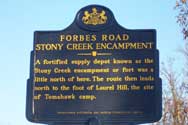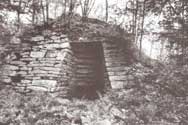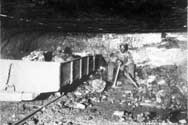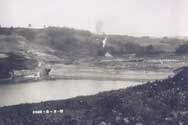 |
The Stonycreek
in the 18th Century was part of the Western Frontier,
an intimidating place for settlers and European soldiers
alike. This was a hunting ground for the Lenni Lenape
(Delaware) and Shawnee. Brigadier General John Forbes' army
of British and Provincials cut a road through here on their
way to seize the Forks of the Ohio - now Pittsburgh - from
the French. The first settlers here had to fight marauding
Indians during Pontiac's War and the Revolutionary War.
For more information.
|
 |
The early
industry of The Stonycreek Corridor was essentially
agrarian in character and developed to support the
subsistence farming activity of the area. Gristmills,
sawmills and woolen mills were built in the early 1800s.
Some of the region's earliest iron furnaces also were
developed within the corridor during the first half of the
19th century. Then, when the Baltimore and Ohio Railroad ran
a branch line from Somerset to Johnstown in the early 1880s,
it opened up the corridor to large-scale lumbering and coal
mining.
For more information.
|
 |
Lumbering and
coal mining activity exploded within The Stonycreek
Corridor circa 1890s once reliable freight transportation
had been established. The corridor's virgin hemlock and
white pine forests attracted large lumbering operations such
as the Babcock Lumber Company. Then the Berwind-White Coal
Company began mining the Eureka Coal Field in the late
1890s, which led to the development of Windber and a number
of surrounding communities.
For more information.
|
 |
The
Quemahoning Dam was constructed between 1907 and 1912
by the Cambria Steel Company of Johnstown as a industrial
water supply for its steel-making operations. During the
same period, a pipeline - 66 inches in diameter and 14 miles
long - was constructed to transport water from the dam to
Johnstown. The Que remained a private, industrial reservoir
until 2000 when it was purchased by the Cambria Somerset
Authority and opened to the public.
For more information.
|

